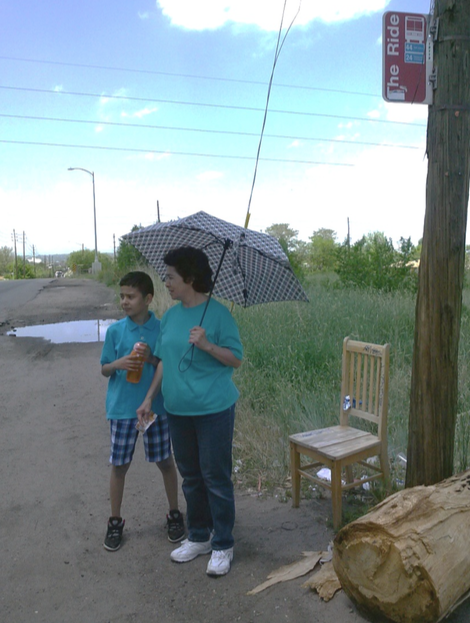Now It’s Up to City Council to Solve Denver’s Sidewalk Woes
After three rounds of testimony from people demanding decent sidewalks, the City Council’s Sidewalk Working Group will try to fix the dysfunctional policies that have contributed to Denver’s Swiss cheese network of crumbling sidewalks.

At least one in four of all trips in Denver are less than one mile, according to the Denver Regional Council of Governments — those are trips that people can walk in about 20 minutes or less. But fewer than 6 percent of trips are made on foot.
Denver’s disorganized patchwork of dangerous sidewalks is a big obstacle to walking in the city. And looking at the problem at a finer scale, a major issue is that low-income neighborhoods have worse walking infrastructure than wealthy ones, because the costs of sidewalk construction and maintenance are expected to be covered by adjacent property owners.
Here are two salient metrics from yesterday’s testimony to City Council:
- 250 miles of streets don’t have sidewalks.
- Of the streets mapped for WALKscope Denver, 35 percent of sidewalks are rated to be in very poor or poor condition.
“Fundamentally, one of the biggest flaws in the current policy is that it’s just really inefficient to build a transportation network one property at a time,” said WalkDenver Policy Director Jill Locantore. “Imagine if this is how we managed our streets — if it was a disconnected set of fragments and we just patiently waited for private property owners to fill in the gaps whenever they had the time and the wherewithal to do so.”

Bus stops were the topic of Thursday’s meeting, the Sidewalk Working Group’s final “information gathering” session. RTD revealed that it does not build sidewalks at bus stops — just the concrete bus pads where buses stop.
It also came to light that the city would probably not be liable if someone in a wheelchair got hurt waiting for the bus in the street, because the sidewalk lacked curb ramps. The city “enjoys a lot of governmental immunity from claims related to pedestrian safety,” according to Assistant City Attorney David Broadwell.
Now that the hearings are over, council members will get down to business and deliberate actual solutions. Advocates want the city to be more accountable for sidewalk conditions and to devise long-term sources of revenue to fund walking infrastructure.
WalkDenver and Public Works estimate that if the average property owner paid $75 a year, the city would raise enough money to have a legitimate sidewalk on at least one side of every street within 10 years. City Council members will draw ideas from other cities that have built better sidewalk networks, including some Denver suburbs that have outdone the Mile High City.
Advocates are optimistic. This is the most sustained, serious attention sidewalks have ever received in Denver, they say. On Thursday, WalkDenver handed council members a petition with nearly 3,000 signatures and 34 support letters from neighborhood organizations. Among the signatories is the umbrella group Inter-Neighborhood Cooperation, which has advocated for comprehensive sidewalk policy for 10 years. All agreed: it’s past time for Denver to do something.
“People generally aren’t thrilled about paying new fees or taxes, but they chose to sign the letters of support and the petition even after thinking through that part of the issue,” Locantore said. “So I think they would agree, that this is a basic piece of infrastructure that we should be funding publicly.”


